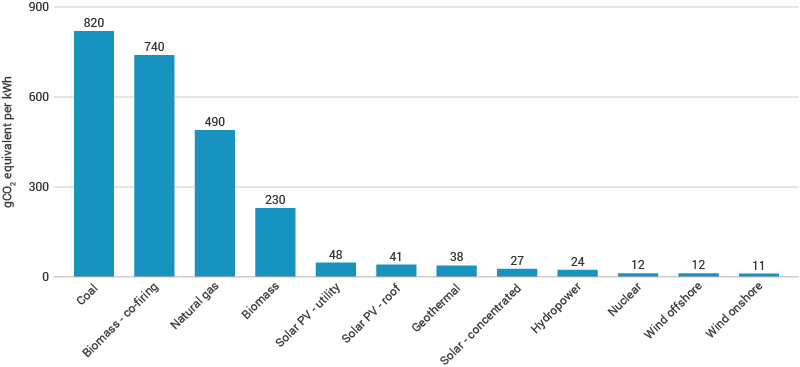Welcome to DU!
The truly grassroots left-of-center political community where regular people, not algorithms, drive the discussions and set the standards.
Join the community:
Create a free account
Support DU (and get rid of ads!):
Become a Star Member
Latest Breaking News
Editorials & Other Articles
General Discussion
The DU Lounge
All Forums
Issue Forums
Culture Forums
Alliance Forums
Region Forums
Support Forums
Help & Search
Environment & Energy
Related: About this forumGroundbreaking Cement-Free Concrete a Game Changer in Construction
By
Tasos Kokkinidis
July 11, 2024

The cement-free concrete concrete is an environmentally friendly alternative to conventional cement. Credit: Dr. Vladimir Ronin, Creative Commons Attribution-Share Alike 3.0/Wikipedia
Cement-free concrete is a revolutionary material that aims to reduce the environmental impact of traditional concrete by eliminating cement from the mix. Cement production is a significant contributor to greenhouse gas emissions, so finding alternatives is crucial for sustainable construction.
Instead of cement, cement-free concrete uses other binding agents, often derived from industrial byproducts. Some common approaches include the Alkali-Activated Cementitious Materials (AACM) that activate pozzolanic substances like ground granulated blast-furnace slag (GGBS) and pulverized fly ash (PFA) to create a binding agent.
Other approaches include the steel slag using industrial waste and developing low-CO2 additives that can be mixed with excavation materials to create cement-free concrete.
Last year one of the first companies to use cement-free concrete, a first-of-its-kind innovation in the construction industry, was used in a commercial building project in Seattle.
More:
https://greekreporter.com/2024/07/11/groundbreaking-cement-free-concrete-debuts-in-seattle/
InfoView thread info, including edit history
TrashPut this thread in your Trash Can (My DU » Trash Can)
BookmarkAdd this thread to your Bookmarks (My DU » Bookmarks)
3 replies, 796 views
ShareGet links to this post and/or share on social media
AlertAlert this post for a rule violation
PowersThere are no powers you can use on this post
EditCannot edit other people's posts
ReplyReply to this post
EditCannot edit other people's posts
Rec (15)
ReplyReply to this post
3 replies
 = new reply since forum marked as read
Highlight:
NoneDon't highlight anything
5 newestHighlight 5 most recent replies
= new reply since forum marked as read
Highlight:
NoneDon't highlight anything
5 newestHighlight 5 most recent replies
Groundbreaking Cement-Free Concrete a Game Changer in Construction (Original Post)
Judi Lynn
Jul 2024
OP
Botany
(72,476 posts)1. What no more 3 to 2 to 1 mix?
3 parts limestone to 2 parts water to 1 part of
cement.
mopinko
(71,801 posts)2. this is my #1 problem w building new nukes.
those things use a ginormous amount of concrete.
this is a great way to use coal waste. fly ash shd b used for a lot of things. they do make landscape bricks w it. they’re kinda grey, so they dont use it for much else. but it’s not that hard to add color. a little iron, and u shd b able to make it look like regular bricks. but u cd make all kinds of colors.
progree
(11,463 posts)3. Looks like wind uses about 10X as much concrete per TWH electricity produced as nuclear
Last edited Sun Jul 21, 2024, 11:38 PM - Edit history (2)

from https://www.democraticunderground.com/10143004710#post7
Solar comes out very well on concrete, but terrible on steel, glass, and other.
==============================================
https://www.cnbc.com/2021/02/14/bill-gates-concepts-to-understand-the-climate-crisis.html?&doc=107178583
Land use efficiency, watts/square meter:
fossil fuel: 500 to 10,000,
nuclear: 500 to 1000,
solar: 5 to 20,
wind: 1 to 2 -- that's 1 to 2 MW per square kilometer
Amount of square kilometers needed to produce 1 GW (1,000 MW), calculated from above:
Fossil fuel: 0.1 to 2 square kilometers
Nuclear: 1 to 2 square kilometers
Solar: 50 to 200 square kilometers
Wind: 500 to 1,000 square kilometers
A square kilometer is 0.3861 square miles, A square mile is 2.590 square kilometers
As far as I know, the solar and wind figures above are for when they are the only use for the land they are on. In fairness, especially with wind, one can have wind turbines on actively-farmed farmland and grazing pastureland. There are also articles like on sheep grazing under solar panels, solar panels covering canals, and the like.
===========================================
While I'm at it, I'm reminded of this graphic (just so I have all this info that I know about in one place):
CO2 equivalent emissions of different power sources, grams/KWH (entire life cycle)
https://world-nuclear.org/information-library/energy-and-the-environment/carbon-dioxide-emissions-from-electricity
The site blocks one from seeing anything with an email solicitation but eventually that goes away, takes at least 30 seconds, grr
On a life-cycle basis, nuclear power emits just a few grams of CO2 equivalent per kWh of electricity produced. Whilst estimates vary, the United Nations (UN) Intergovernmental Panel on Climate Change (IPCC) has provided a median value among peer-reviewed studies of 12g CO2 equivalent/kWh for nuclear, similar to wind, and lower than all types of solar.2

Figure 1: Average life-cycle CO2 equivalent emissions (source: IPCC)